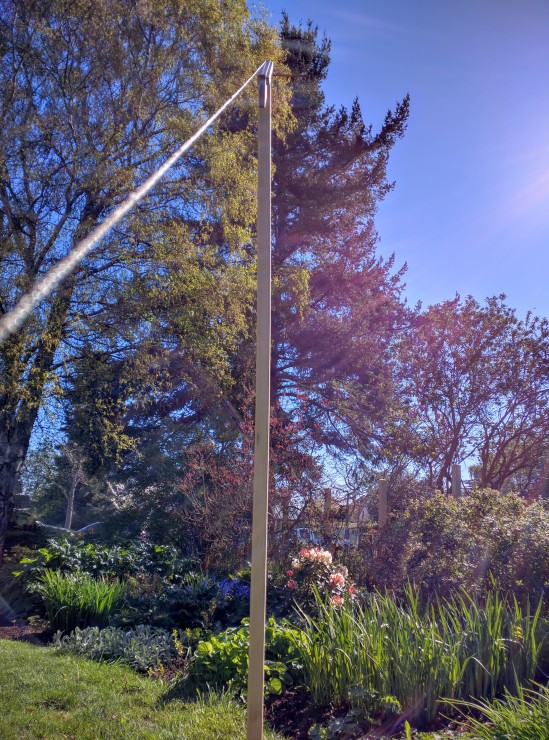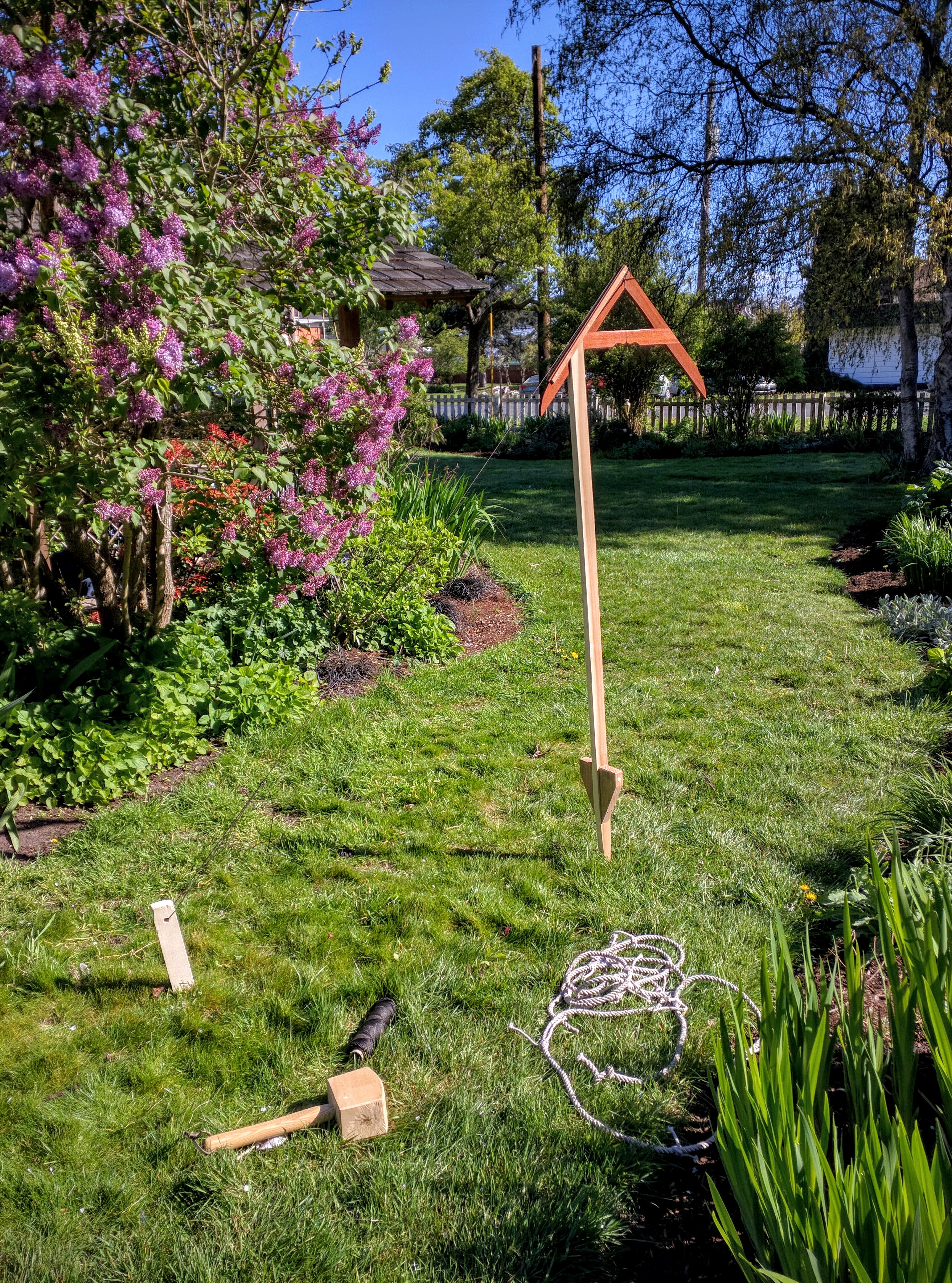…does it make a difference? Where it lands that is. If it does, you likely want to know how far it will fall in order to move you or your loved ones/things out of the way. To determine this distance you can use a truly ancient way of measuring (thankyous are in order to Thales of Miletus 624 to 546 BCE). Gather up the tools as shown in the photo above: a Libella (mason’s level); a length of string; a straight stick and a stake. You may like a mallet to pound the stake in (the stick can have foot rests attached). Optional: A long length of rope with which to draw a circle around the tree at the maximum fall range.

Here we are measuring the height of the fir tree in the distance–and these are the step-by-step instructions.
- Find a clearing with a sight line to the top of the tree
- From a distance, walk to the tree while carrying the libella–which you have carefully attached to the top of the straight stick by squaring the cross-arm to the edge of the stick.
- Stop every fathom or two and take a sighting along the leg of the libella to see if it lines up with the peak of the tree. IMPORTANT: The plumb bob of the libella should fall on the centerline of the cross-arm–which indicates the stick is plumb. NOTE: We are assuming for the geometry to work that the tree is plumb as well. (Luckily, trees really like to be plumb (and often are) for the same reasons we like posts to be plumb.)
- When you get the sighting lined up, push the stick into the ground. Yes the angle will go off very slightly, but we are talking a resultant difference in inches across the total distance.
- Now run a string parallel to the libella sighting arm to reach the ground as shown in the first photo. Drive in a stake: This is where the very top of the tree will touch if it falls right towards you.
- If you want to know where this point is in all directions around the tree, stretch a rope from the stake to the tree. Have someone hold it there as you walk the stake end of the rope in a circle around the tree (They will follow you in a tight circle at the tree).
- If, for some reason, you want a number to describe the fall distance, you can measure the rope in the measurement system of your choice. In ancient times they would, for example set a knot at every cubit; mariners set knots every fathom. I’m sure you can fathom why.




4 thoughts on “If a Tree Falls in the Woods…”
Zackdog
(Luckily, trees really like to be plumb (and often are) for the same reasons we like posts to be plumb.)
Trees grow vertically to maximize the amount of sunlight they get to support photosynthesis. That’s not exactly the same reason that we install posts vertically (aesthetics and perhaps strength).
Cool website and blog topics – makes me wish that I was back in 10th grade geometry kickin’ butt on quizzes and tests again. Oh the cool useful stuff that I’ve forgotten.
Joe
Jim Tolpin
I stand corrected about how trees stand correctly. They are all about capturing free energy and can deal with being out of plumb by a process of growing more cells on the compression side (forgot the name of this process). We like posts to be perfectly plumb to carry loads parallel to the grain. They are at right angles—right because the angle is right (recto; co-recto)
kevedw-9
Hej Jim, How about a tutorial on your “libella”. It would be interesting to see a break down. Joints, proportions, material, etc.
kevedw-9
Hej Jim, how about a tutorial on your “libella”. It would be interesting to see joints, material, proportions, etc. Have googled a bit and found very little.